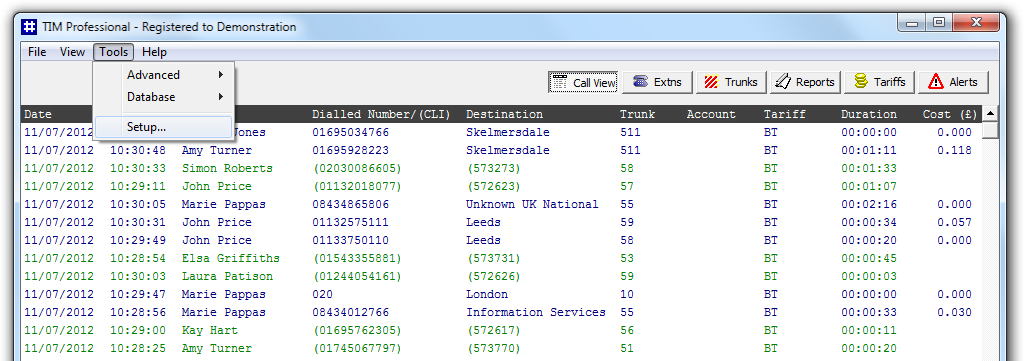To access the Setup screen, click on the button from the top-left menu bar, as shown below:

A new window will open, displaying the following configuration options:

| Tab | Description |
|---|---|
| PBX | Contains all of the parameters necessary for the running of the system with your PBX. |
| LCR | Setup your least-cost routing digits here, and point them to specific tariffs. |
| Network | Setup the IP addresses of remote data clients and choose the unique ways these are handled. |
| Tariffs | Allows you to localise the tariffs in order to ensure they cost correctly. |
| Sites | We'd normally recommend upgrading to TIM Plus if logging multiple sites as it will be more cost effective and provide a lot more features. |
| Locations | Assign custom names to specific or ranges of dialled numbers. |
| Account codes | Add or remove account codes and their associated names. |
| System | Set general system parameters here, e.g. VAT, currency, Live stats etc. |
| Routing | Assign multiple tariffs to different extension and trunk numbers. |
| Database | This is purely for diagnostics and rarely used. |
The main configuration file
TIM Professional stores all its configuration settings into a file, main.cfg, found within the main installation folder ( \tim\config\main.cfg ). It consists, as with the other configuration files, of a line-by-line list of settings. Changing some of these settings only takes effect after the system is restarted.
For a full list of configuration file options, please visit the Configuration File Options section.
Labels: